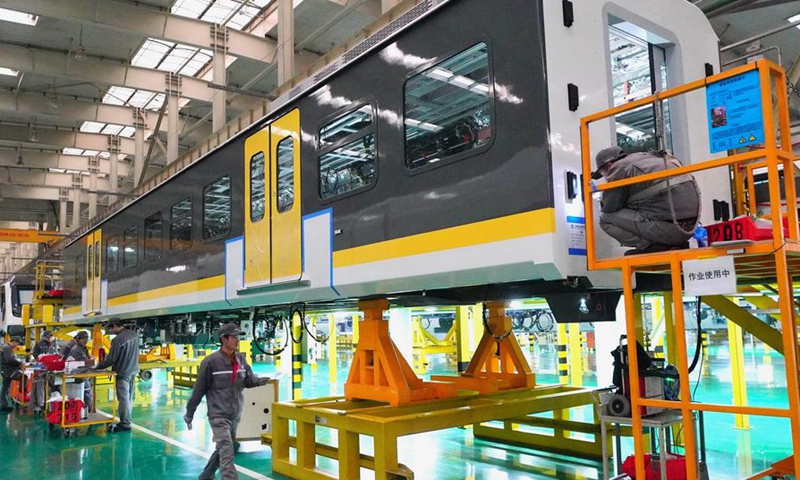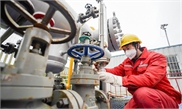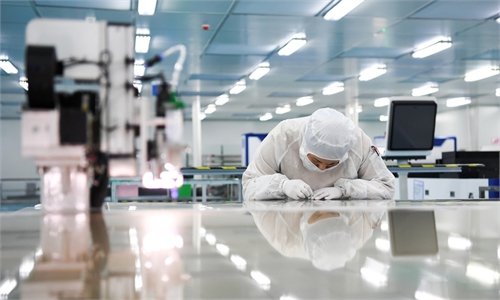
Workers work on a production line of CRRC Tangshan Co., Ltd., in Tangshan, north China's Hebei Province, Dec. 31, 2019.Photo:Xinhua
China's top state-asset regulator has set targets for the country's centrally administered state-owned enterprises (SOEs) this year, including achieving a profit growth rate above that of the national economic output.
Addressing a press conference on Tuesday, Hao Peng, head of the State-owned Assets Supervision and Administration Commission (SASAC), said this year should see more investment in research and development by SOEs as well as higher production efficiency and income margins, while keeping asset liabilities under control.
"Our centrally administered SOEs and enterprises supervised by the state-owned system are preparing for the 14th Five-Year Plan (FYP). We will wait for the national economic 14th FYP, which is slated to be passed during the upcoming two sessions, based on which, our related growth indicators will be further confirmed," said Hao.
This year's two sessions will convene on March 4 in Beijing.
Against the backdrop of the coronavirus pandemic, the global economic downturn and a sustained US crackdown, China's centrally administered SOEs saw net profits rise 2.1 percent to 1.4 trillion yuan ($215.89 billion) in 2020, with officials and experts giving recognition to their key roles in China's fight against the virus and as a mainstay in China's economic growth.
"This growth rate is not high, but it is not easy to come by. Everyone knows that last year, affected by multiple factors such as the severe impact of the COVID-19 pandemic, fluctuations in the prices of crude oil and other commodities, and the stagnation of international air transportation, the profits of central enterprises in the first quarter of 2020 had negative growth of 58.8 percent," Hao said.
Besides, despite the problems last year, central SOEs kept to the bottom line of no major risks. At the end of 2020, the asset-liability ratio of central SOEs fell to 64.5 percent, successfully fulfilling the goal of "a reduction of two percentage points in three years." Since 2017, there has not been a single bond default at a centrally administered SOE, Hao said.
However, an array of bond defaults by local SOEs since last year have raised concerns.
The default of local SOE bonds was the result of multiple factors, both external ones like the COVID-19 pandemic, and internal problems like inadequate governance, said Peng Huagang, spokesperson for SASAC.
"Although the default ratio of SOE bonds has increased recently, it is still lower than the market average, and the default risk is generally controllable," said Peng, adding that the watchdog will jointly establish an SOE bond risk prediction and early warning mechanism with the People's Bank of China and the China Securities Regulatory Commission.
Efforts must be stepped up to implement the three-year plan for SOE reforms and ensure that more than 70 percent of the reform mission is completed this year, according to Hao.
Central authorities deem the 2020-2022 period a "crucial stage" for SOE reform. The main goals include making the state-owned economy more competitive, innovative and resistant to risks.
The number of central SOEs with mixed ownership accounts for more than 70 percent, especially in such areas as civil aviation, telecommunications, petroleum and the military. Now listed companies have become the main carriers for the mixed-ownership reform, said Hao.
China optimized the distribution and structure of state capital during the 13th FYP period with 24 centrally controlled SOEs in 12 groups completing their reorganization, said Peng. The number of centrally controlled SOEs was adjusted from 106 to 97, data from SASAC showed.
Global Times


